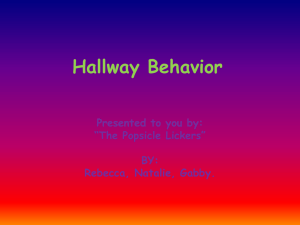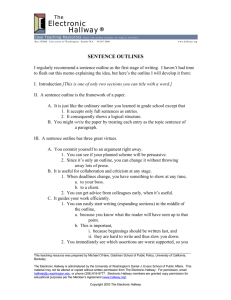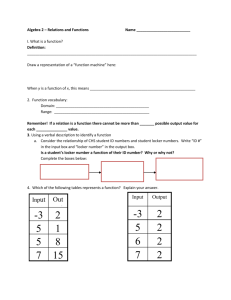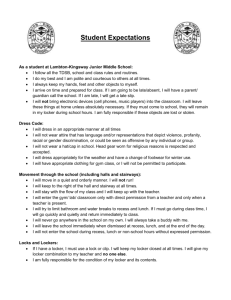Pigeonhole Principle: Examples & Applications
advertisement
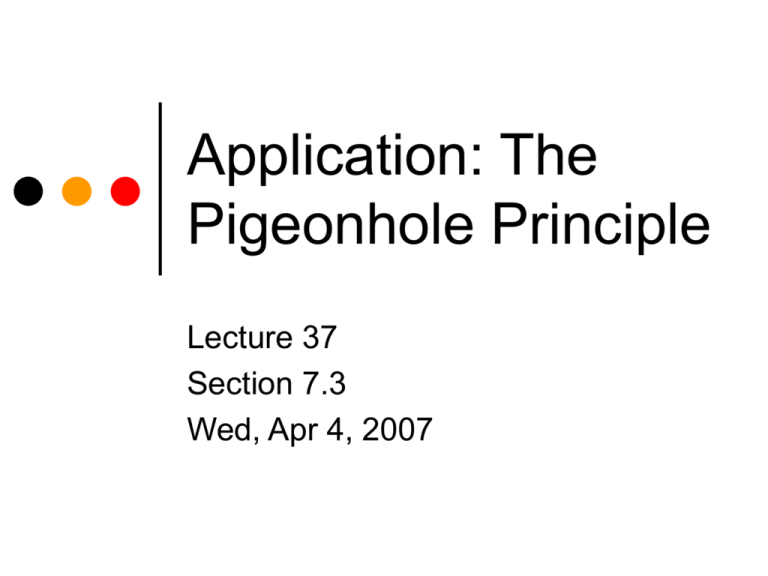
Application: The
Pigeonhole Principle
Lecture 37
Section 7.3
Wed, Apr 4, 2007
The Pigeonhole Principle
Pigeon version: If you put n pigeons into m
pigeonholes, and n > m, then at least at
least two pigeons are in the same
pigeonhole.
Mathematical version: If A and B are finite
sets and |A| > |B| and f : A B, then f is
not one-to-one.
Example
If a drawer contains 10 black socks and 12
blue socks, how many socks must you
draw at random in order to guarantee that
you have two socks of the same color?
Example
A bag of jellybeans contains dozens of jelly
beans of each of 8 different colors. How
many jellybeans must we choose in order
to guarantee that we have at least two
jellybeans of the same color?
To guarantee three of the same color?
To guarantee four of the same color?
The PowerMod function
Define the PowerMod() function as
PowerMod(n, a, m) = na mod m.
Then the sequence of numbers
PowerMod(3, i, 7), 0 i 10,
must contain at least one repeated value.
Example
If we choose 6 distinct integers from 1 to 9,
at least one pair of them adds to 10.
Why?
Example
If we choose 6 distinct integers from 1 to 9,
at least two pairs of the chosen integers
have the same total.
Why?
Example
How many integers must we choose from 1
to 99 in order to guarantee that at least two
distinct pairs of them will have the same
total?
Functions of Finite Sets
Theorem: Let A and B be finite sets with |A|
= |B| and let f : A B. Then f is one-toone if and only if f is onto.
Proof:
Suppose that f is not onto.
Let f(A) be the set {f(a) | a A}.
Then f : A f(A) and |f(A)| < |A|.
Functions of Finite Sets
By the mathematical version of the
pigeonhole principle, there are at least two
distinct members a1, a2 A with the same
image in f(A).
That is, f(a1) = f(a2) for some a1 a2.
Thus, f is not one-to-one.
By the contrapositive, if f is one-to-one,
then f is onto.
Functions of Finite Sets
We also need to prove that if f is onto, then
f is one-to-one. (Exercise)
The Locker Problem
A hallway has 1000 lockers, numbered 1
through 1000.
We have 1000 students, numbered 1
through 1000.
For each k from 1 to 1000, we send student
#k down the hallway, with instructions to
reverse the open/closed status every kth
locker door, beginning with locker #k.
The Locker Problem
After all the students are done, which
lockers doors will be open?
Did it matter in which order the students
were dispatched?
The Locker Problem
Suppose we have only 10 doors and 10
students.
We wish to leave open doors 2, 4, 5, 8, 9,
and no others.
Which students do we send down the
hallway so that in the end only doors 2, 4,
5, 8, and 9 are open?
The Locker Problem
Clearly, we must not send student #1 down
the hallway.
Thus, clearly, we must send student #2
down the hallway.
That will leave open doors 2, 4, 6, 8, 10.
Thus, clearly, we must not send student #3
down the hallway.
The Locker Problem
Thus, clearly, neither should we send
student #4 down the hallway.
Thus, clearly, we must send student #5
down the hallway.
That will leave open doors 2, 4, 5, 6, 8.
Thus, clearly, we must send student #6
down the hallway.
The Locker Problem
Thus, clearly, we must not send students
#7 or #8 down the hallway.
Thus, clearly, we must send student #9
down the hallway and we must not send
student #10 down the hallway.
The Locker Problem
Given an arbitrary subset D of the 1000
locker doors, is it possible to send some
subset S of the 1000 students down the
hallway with their instructions such that in
the end, only the doors in set D are open?
The Locker Problem
Let A be the set of choices of which
students to send down the hallway.
Let B be the set of choices of which locker
doors to be left open in the end.
How many elements are in A and B?
The Locker Problem
Let f : A B by defining f(A) = the set of
doors left open when the students in A are
sent down the hallway.
If we can show that f is one-to-one, then it
follows that it is onto.
How can we show that f is one-to-one?
